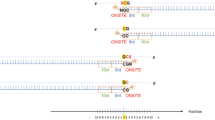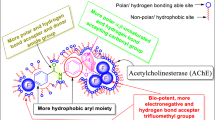Abstract
IT has been suggested that the effects of chlorpromazine in man and animals are genetically influenced1,2. In mice, genetic control of sensitivity to this drug seems to reside in two loci, the more important of which lies on chromosome 9 at about the region which controls the histo-compatibility system H2 (ref. 3). We have investigated whether the presence or absence of some alleles of the HLA system—analogous to the H2 system of mouse—correlate with individual sensitivity to the drug. We evaluated the clinical responses to chlorpromazine of 33 chronic schizophrenic subjects who had been HLA typed during previous investigations4,5. There was a highly significant positive response to chlorpromazine in patients with the antigen HLA-A1 of the HLA-A locus (unpublished results of E.S., L. Bellodi and E. Sacchetti). A possible explanation of the correlation is that the presence of HLA-A1 on the cell membrane makes chlorpromazine bind more readily to the cell. As chlorpromazine binds to lymphocyte membranes6, we investigated whether or not the binding of the drug could interfere with the specific binding of anti-HLA antibodies, particularly anti-HLA-Al antisera. Furthermore, as chlorpromazine binds to the β-adrenergic cell receptors, which are also present on peripheral blood lymphocytes7, we also used the β-adrenergic mediators dopamine (DA) and noradrenaline (NA).
This is a preview of subscription content, access via your institution
Access options
Subscribe to this journal
Receive 51 print issues and online access
$199.00 per year
only $3.90 per issue
Buy this article
- Purchase on SpringerLink
- Instant access to full article PDF
Prices may be subject to local taxes which are calculated during checkout
Similar content being viewed by others
References
Kalow, W., Appl. Ther., 8, 44–47 (1966).
Fuller, J. L., Psychopharmacologia, 16, 261–271 (1970).
Castellano, C., Eleftheriou, B. E., Bailey, D. W., and Oliverio, A., Psychopharmacologia, 34, 309–316 (1974).
Cazzullo, C. L., Smeraldi, E., and Penati, G., Br. J. Psychiat., 125, 25–27 (1974).
Smeraldi, E., Bellodi, L., and Cazzullo, C. L., Biol. Psychiat. (in the press).
Ferguson, R. M., Schmidtke, J. R., and Simmons, R. L., Nature, 256, 744–745 (1975).
Galant, S., and Remo, R., J. Immun., 114, 512–513 (1975).
Boyum, A., Scand. J. clin. lab. Invest., 21, Suppl. 97 (1968).
Bodmer, W. F., Nature, 237, 139–141 (1972).
Ostberg, L., Rask, L., Wigzell, H., and Peterson, P. A., Nature, 253, 735–736 (1975).
Peterson, P. A., et al., Proc. natn. Acad. Sci. U.S.A., 72, 1612–1616 (1975).
Author information
Authors and Affiliations
Rights and permissions
About this article
Cite this article
SMERALDI, E., SCORZA-SMERALDI, R. Interference between anti-HLA antibodies and chlorpromazine. Nature 260, 532–533 (1976). https://doi.org/10.1038/260532a0
Received:
Accepted:
Issue date:
DOI: https://doi.org/10.1038/260532a0
This article is cited by
-
Interference between anti-HLA antibodies and CPZ metabolites
Psychopharmacology (1980)
-
Correlation between the principal histocompatibility system in mice and men with predisposition to the development of narcotic dependence
Bulletin of Experimental Biology and Medicine (1980)



